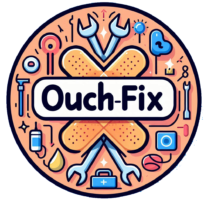Pain is something everyone experiences—whether it’s from an injury, poor posture, or a chronic condition like arthritis. While pain can interfere with work, sleep, and daily activities, there are effective strategies to manage it.
Physiotherapists, who are experts in movement and rehabilitation, offer evidence-based advice to help people reduce pain and regain mobility. Unlike quick fixes or medications that mask symptoms, physiotherapy emphasizes long-term solutions that address the root causes.
In this guide, we’ll explore the top pain management tips physiotherapists recommend, practical examples you can try at home, and when to seek professional support.
Understanding Pain: Acute vs. Chronic
Pain can be short-term or long-term, and understanding the difference is important.

- Acute Sudden onset, usually due to an injury, surgery, or accident.
- Often sharp and intense but typically improves as the body heals.
- Example: spraining your ankle while running.
- Chronic pain
- 👉 Understanding whether your pain is acute or chronic helps determine the right management approach.
Common Pain Issues Physiotherapists Treat
Physiotherapists help people with many types of pain, including:
✔ Back and neck pain
✔ Joint pain (knPhysiotherapists work with patients across all age groups and activity levels. Some of the most common pain conditions they treat include:
- Back and neck pain from desk jobs, lifting injuries, or spinal issues.
- Joint pain in the knees, shoulders, and hips caused by arthritis or overuse.
- Muscle strains and sprains from sports, exercise, or accidents.
- Arthritis-related pain and other inflammatory conditions.
- Sports injuries such as ligament tears, tendonitis, and runner’s knee.
- According to the World Health Organization, musculoskeletal conditions are the leading cause of disability worldwide, underscoring the importance of effective pain management strategies (WHO sourceees, shoulders, hips)
- ✔ Muscle strains and sprains
- ✔ Arthritis and inflammation-related pain
- ✔ Sports injuries
Top Physiotherapist-Recommended Pain Management Tips

1. Maintain Good Posture
Slouching or sitting for long periods can strain your neck, shoulders, and back. Physiotherapists emphasize neutral spine alignment to minimize stress on joints.
Tips:
- Keep your shoulders relaxed and back straight.
- Adjust your chair so feet rest flat on the floor.
- Position your screen at eye level.
📌 Example: Using an ergonomic office chair can reduce back pain by up to 54% compared to a standard chair, according to ergonomic studies.
2. Keep Moving with Gentle Exercises
Too much rest can worsen stiffness and delay healing. Gentle, low-impact activities maintain mobility and reduce discomfort.
Best activities:
- Walking
- Swimming
- Cycling
- Tai Chi
👉 Even 20–30 minutes of movement daily can ease stiffness and improve circulation.
3. Use Heat and Cold Therapy
- Cold therapy (ice packs): Reduces swelling and numbs sharp pain, especially within the first 48 hours of an injury.
- Heat therapy (heating pads, warm baths): Relaxes tight muscles and improves blood flow—ideal for chronic pain.
- ⚠️ Tip: Always wrap ice or heat packs in a towel to protect your skin..
4. Stretch Regularly
Stretching prevents stiffness, improves flexibility, and reduces the risk of reinjury.
Simple daily stretches:
- Neck tilts
- Hamstring stretches
- Shoulder rolls
- Cat-cow yoga stretch
Just 5–10 minutes of stretching in the morning can help set the tone for a pain-free day.

Also Read: What Common Misconceptions About Pain Management do Experts Highlight?

5. Strengthen Your Muscles
Weak muscles put more strain on joints. Physiotherapists often prescribe strength training to build support and resilience.
Examples:
- Bodyweight squats
- Resistance band rows
- Core stability exercises
- Light weightlifting
✅ Stronger muscles = less stress on joints = less pain.
6. Improve Your Sleeping Position
Poor sleep posture can contribute to morning stiffness and chronic pain.
Physiotherapist tips:
- Choose a supportive mattress and pillow tailored to your body.
- Sleep on your back with a pillow under your knees.
- Side sleepers: place a pillow between your knees for spine alignment.
7. Try Hands-On Therapy
Manual therapy techniques—like massage, joint mobilization, and myofascial release—help reduce muscle tightness and restore movement.
You can also try self-massage tools like foam rollers and massage balls for daily relief.
8. Manage Stress
Stress contributes to pain by tightening muscles and amplifying discomfort.
Stress-reduction strategies:
- Deep breathing
- Meditation
- Guided relaxation
- Spending time in nature
Harvard Health notes that stress management can reduce the intensity of chronic pain (Harvard source).
9. Explore Mind-Body Techniques
Mind-body practices improve both flexibility and pain tolerance.
- Yoga → enhances posture, balance, and relaxation.
- Meditation → lowers pain perception by calming the nervous system.
- Breathing exercises → reduce tension in the body.
Even 5–10 minutes daily can make a measurable difference.
10. Set Up an Ergonomic Workspace
A poorly designed workspace can cause long-term musculoskeletal pain.
Checklist:
- Frequent breaks every 30–45 minutes.
- Chair supports lower back.
- Desk height allows elbows to rest at 90 degrees.
- Screen positioned at eye level.
11. Stay Hydrated and Eat Well
Dehydration can cause muscle cramps and fatigue. A diet rich in anti-inflammatory foods can also ease chronic pain.
Pain-friendly foods:
- Fatty fish (omega-3s)
- Berries and cherries
- Leafy greens
- Nuts and seeds
- Olive oil
Avoid excess processed sugar and fried foods, which can increase inflammation.
12. Use Self-Massage and Foam Rolling
Foam rolling is a simple, inexpensive tool to release tight muscles and improve blood flow.
How to use:
- Avoid rolling directly on joints.
- Roll slowly over sore areas.
- Spend 30–60 seconds per muscle group.
13. Seek Professional Physiotherapy
When self-care isn’t enough, a physiotherapist can create a personalized treatment plan.
Common techniques include:
- Manual therapy
- Dry needling
- Ultrasound therapy
- Customized exercise programs
Professional guidance helps prevent further injury and speeds recovery.

Also Read: What Advice is Available for Managing Pain Without Medication?
14. Avoid Pain Triggers
Identifying and modifying habits that worsen pain is key.
Examples:
- Using proper footwear for walking or running.
- Lifting with your legs instead of your back.
- Adjusting chair height.
15. Stay Consistent with Your Pain Management Plan
Consistency matters more than intensity. Physiotherapists stress the importance of daily routines to see real progress.
Keep a pain diary to track improvements and setbacks. This not only motivates you but also helps your therapist fine-tune your plan.
Conclusion
Pain can feel overwhelming, but it doesn’t have to control your life. Physiotherapists recommend a holistic approach: combining posture awareness, exercise, lifestyle adjustments, and stress management.
By applying these strategies consistently, you can:
- Reduce discomfort
- Improve mobility
- Enhance your quality of life
If your pain is persistent or worsening, don’t wait—book an appointment with a physiotherapist to get a personalized plan for lasting relief.
Frequently Asked Questions (FAQs)
Q1. How quickly can I see results from physiotherapy pain management?
Results vary depending on the condition. Some people notice relief in a few sessions, while chronic cases may take weeks or months.
Q2. Can I manage chronic pain without medication?
Yes. Many physiotherapists focus on exercise, manual therapy, and lifestyle changes to minimize reliance on medication.
Q3. Are pain management exercises safe for everyone?
Most gentle exercises are safe, but it’s best to consult a physiotherapist if you have a serious injury or medical condition.
Q4. Should I use heat or ice for back pain?
Use ice for sudden injuries or inflammation.
Use heat for chronic stiffness or sore muscles.
Q5. When should I see a physiotherapist instead of managing pain on my own?
If pain persists beyond a few weeks, interferes with sleep, or limits your daily activities, professional help is recommended.




